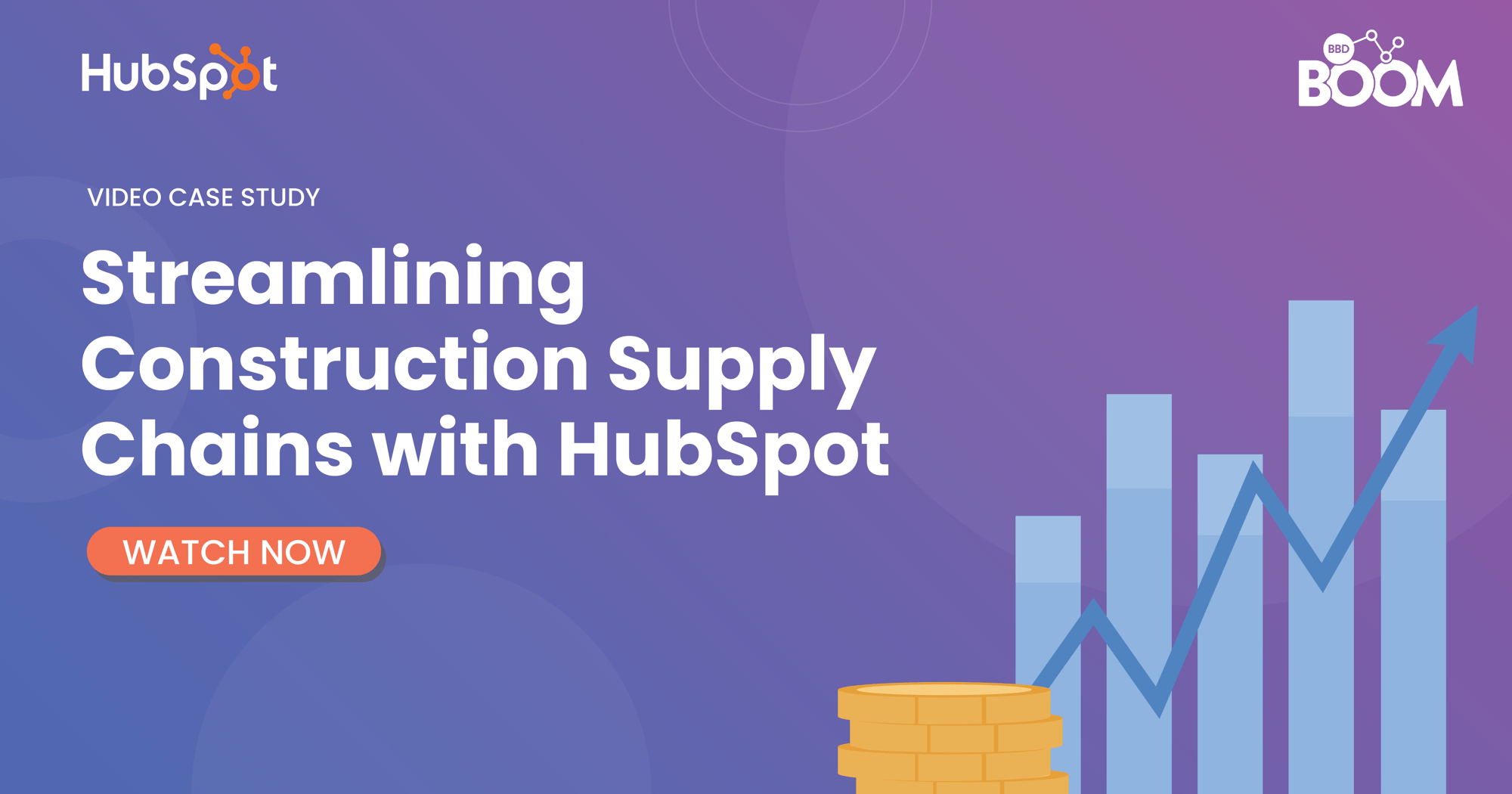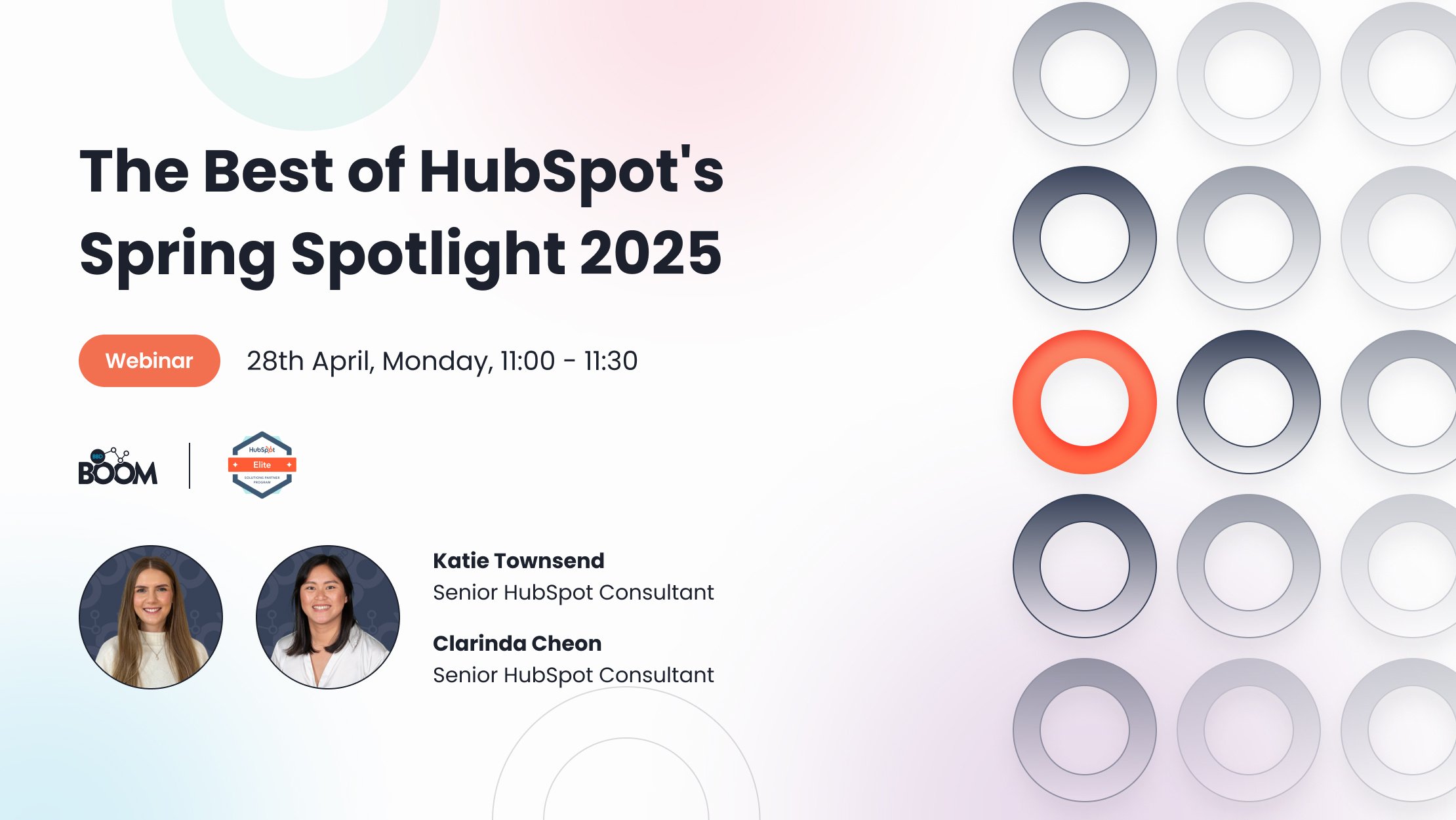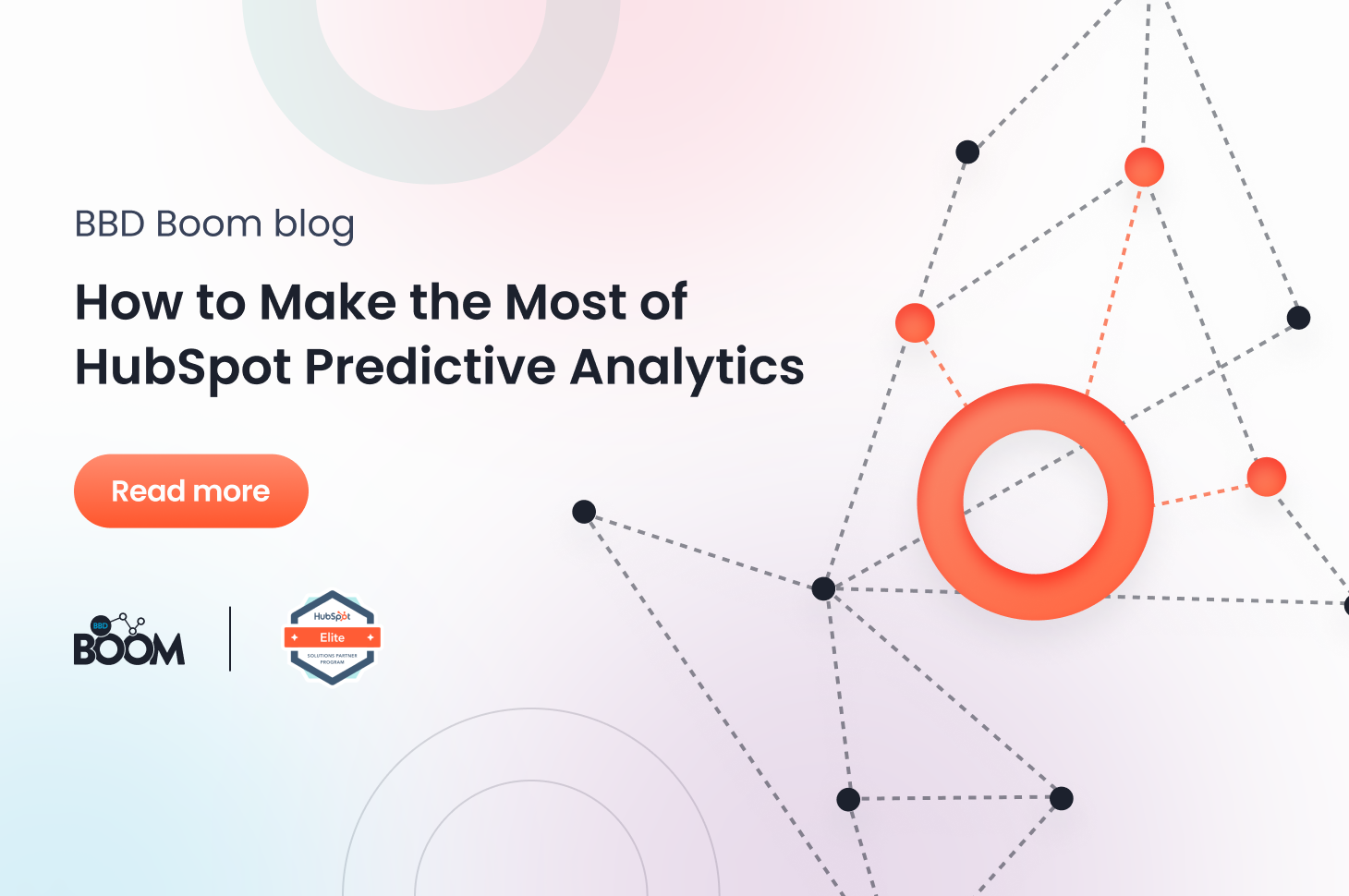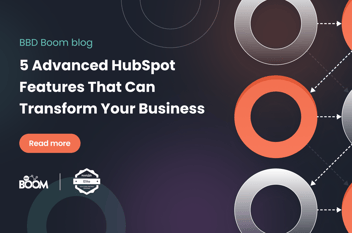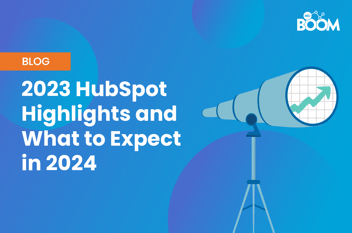Let's be honest, marketing and sales would be much easier if we could see into the future. Okay now maybe we can't go full blown fortune teller but with HubSpot we can get close enough. Their predictive analytics help you make smarter decisions and spot trends before they happen - meaning you can fine tune your strategy for MAXIMUM impact. But how do you actually use it to it's full potential? Let's find out!
Understanding HubSpot Predictive Analytics
HubSpot’s predictive analytics tools analyse past behaviours and trends to make data-driven predictions about future customer actions. These insights can be used to refine lead qualification, improve retention strategies, and drive revenue growth. Some of the key features include:
-
Predictive Lead Scoring – Identifies which leads are most likely to convert, helping sales teams focus their efforts on high-potential prospects.
-
Customer Churn Prediction – Flags customers who may be at risk of leaving, allowing for proactive engagement and retention strategies.
-
Revenue Forecasting – Uses historical data to estimate future revenue trends, helping businesses make informed financial decisions.
-
Sales Forecasting – Predicts which deals are most likely to close, enabling better sales planning and resource allocation.
These features provide a foundation for data-driven decision-making, but to truly benefit from them, you need to optimise how you use them within your workflows. Let's have a look at each one of them separately.
Predictive Lead Scoring
One of the most powerful aspects of HubSpot’s predictive analytics is its lead scoring system, which helps prioritise leads based on their likelihood to convert. By leveraging AI-assisted engagement scoring, marketers can effectively pinpoint their most promising leads by merging their expertise with AI capabilities. HubSpot examines past interactions of leads that successfully converted, providing recommendations to create a more accurate lead scoring systems. HubSpot also uses fit and engagement data points from the customer journey to analyse and score each lead.
However, the default settings may not always align perfectly with your specific business model and as your business grows you might want to stay a bit more in control of these scores. So, you can now set up lead score limits and score a lead’s actions individually or by group, so they fit your sales funnel. With HubSpot's lead scoring software becoming more advanced you need to stay on top of its features and ensure that it aligns perfectly with your business model.
.png?width=1280&height=813&name=Flexible_Builder_EN%20(1).png)
How to optimise your lead scoring:
-
Regularly review and adjust your scoring models based on actual conversion data, key actions and customer journey.
-
Ensure your CRM data is clean - duplicate or outdated records can skew predictions.
-
Experiment with different follow-up strategies for high-scoring leads to see what yields the best results.
- Ensure your marketing to sales handover process is clearly defined and automated.
At the end of the day, predictive lead scoring comes down to working smarter not harder. Instead of spreading your efforts thin, focus on the high priority leads so you can build stronger relationships and ultimately close more deals.
Customer Churn Predictions with Health Scores
Customer churn prediction helps businesses anticipate which customers are at risk of leaving. It works by analysing historical engagement data, identifying patterns that indicate potential churn, and flagging customers who exhibit those behaviours.
In HubSpot, we use the customer health score as a metric to helps us gauge a customer’s likelihood to stick around or churn. It’s a powerful metric for identifying loyal customers and those at risk of churn, which allows you to prioritise your service outreach accordingly. Factors such as decreased email engagement, reduced product usage, or a drop in customer support interactions can indicate that a customer is disengaging. HubSpot’s churn prediction model allows businesses to intervene early and take proactive steps to retain at-risk customers.

How to use churn prediction effectively:
-
Set up automated workflows to trigger retention campaigns when a customer is flagged as a churn risk.
-
Engage at-risk customers with personalised offers, check-in emails, or exclusive benefits.
-
Analyse past churn trends to identify common risk factors and adjust engagement strategies accordingly.
Forecasting Sales: No More Wishful Thinking
Revenue forecasting is an essential tool that helps businesses predict future income based on past trends. HubSpot’s predictive analytics uses historical sales data, deal progressions, and customer behaviours to generate revenue forecasts with high accuracy.
This feature enables businesses to set realistic financial goals, allocate resources effectively, and make strategic decisions regarding hiring, marketing spend, and product development. Revenue forecasting can also help identify seasonal trends, allowing companies to prepare for peak sales periods or slowdowns.
%20(2).png?width=1280&height=813&name=Sales%20Hub_AI%20Forecasting_EN.png%20(1)%20(2).png)
Best practices for improving revenue forecasting:
-
Compare predictive forecasts with actual revenue performance to measure accuracy and refine strategies.
-
Break down forecasts by sales rep, region, or product to uncover trends and areas for improvement.
-
Align sales and marketing teams around predicted pipeline gaps so they can take proactive action.
-
Use forecasting data to set realistic, data-driven sales targets and incentives.
Predictive Deal Scoring: Close More, Waste Less
Predictive deal scoring is a powerful tool that helps sales teams identify which deals have the highest likelihood of closing. It uses historical sales data, behavioral insights, and AI-driven pattern recognition to evaluate open deals and assign them a probability score.
This feature works by analyzing a variety of factors, including deal stage progression, engagement levels, past sales trends, and the behavior of similar deals that have closed successfully. The goal is to give sales teams a clear understanding of which opportunities are worth prioritising and which ones may require additional effort or nurturing.
How to make the most of predictive deal scoring:
-
Monitor deal scores regularly to focus efforts on the highest-probability deals.
-
Use deal scoring insights to allocate resources more effectively within the sales team.
-
Adjust sales strategies based on deal movement - high-scoring deals may need faster follow-up, while low-scoring deals may benefit from nurturing campaigns.
-
Combine deal scoring with pipeline analysis to identify trends in why deals succeed or fail.

Work Smarter Not Harder
HubSpot’s predictive analytics tools offer an incredible opportunity to optimise your marketing, sales, and customer retention efforts. But to truly make the most of them, businesses need to go beyond the default settings and actively refine their strategies. By fine-tuning your lead scoring, leveraging churn prediction, improving revenue and sales forecasting, and applying predictive insights to marketing campaigns, you can create a data-driven approach that maximises your success.
Start exploring these features today, experiment with different strategies, and continuously refine your approach. The businesses that embrace predictive analytics effectively will be the ones that stay ahead of the competition in the ever-evolving digital landscape.
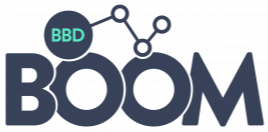
.png)
